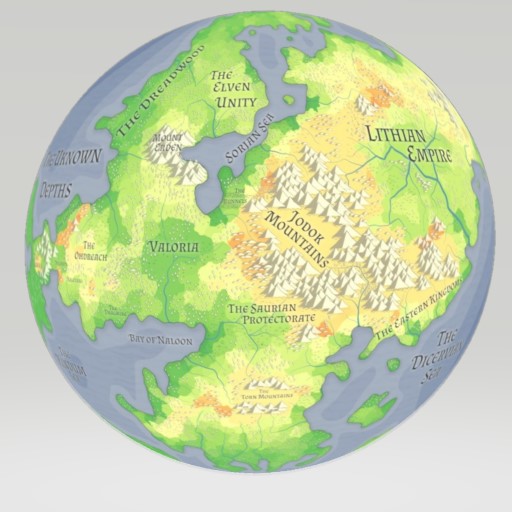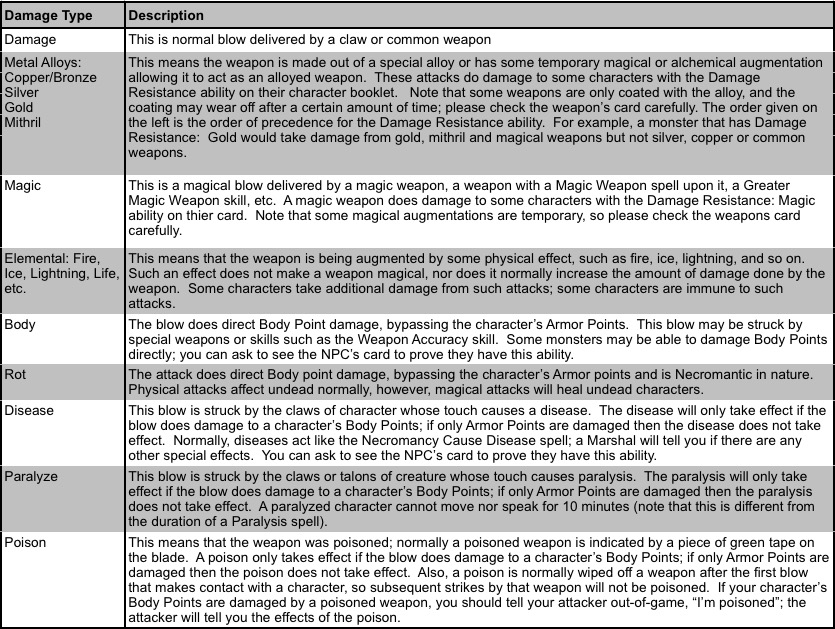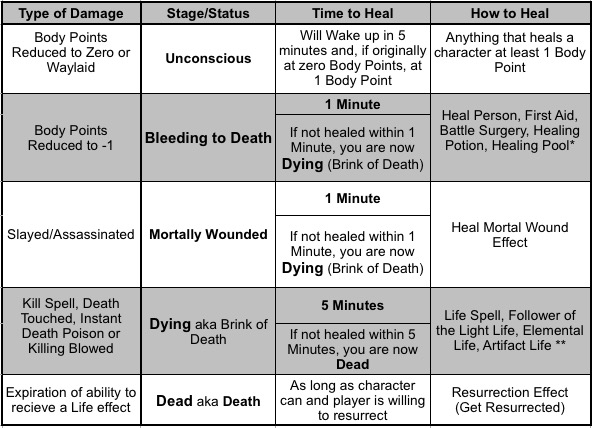They Fell on the battlefield, I hope They Can Resurrect…
Combat, Death & Dying
Combat
Death & Dying
Resurrection
Combat
Combat Certification
Combat certifications help to ensure that everyone engaging in combat at PORTAL is doing so in the safest, most care-filled manner possible at all times!
Combat Training & Certification always occur during all New Player Orientations.
Learn More
Every player that wants to use a melee weapon or shield, throw a spell, or become an archer is required to attend Combat Training and possess an active combat certification before doing anything that requires that certification In Game.
While all areas (melee weapon/shield, packet deliver, archery) are taught during orientations, players are only required to earn active certifications in those areas that they wish to use In Game as either a PC, NPC, or RNPC.
You will learn everything you need to know to fight safely:
- Where not to hit.
- Where and how to try to hit.
- How hard to hit.
- How to avoid being hit!
Everyone is required to correctly model what they have learned during training to qualify for active certifications. Regardless of your experience level or ability, the process is always straightforward, quick, and fun!
You will also be shown how to recognize when others are not fighting safely and what to do about it.
Combat certifications help to ensure that everyone engaging in combat at PORTAL is doing so in the safest, most care-filled manner possible at all times. A lapse in attendance of 6 months or more requires re-certification to regain active status.
Fair warning, your certification means you have proven that you can fight safely, not necessarily well. This is an important distinction, and additional training in your specific weapon is always recommend…and often loads of fun!
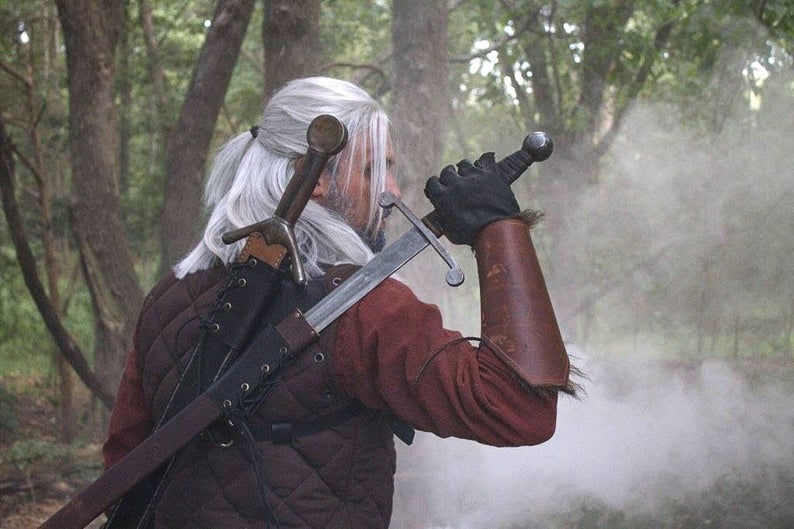
Striking with a Weapon
You should swing your weapon at moderate speed with moderate force.
If you do not have enough time to call damage between each of your swings, then you are swinging too quickly.
You should aim to swing hard enough to be felt by your target, and no harder, regardless of attire.
More Info
Striking With A Weapon continued…
A swing should cover no more than 180 degrees, and no less than a combined 45 degrees with your arm and 90 degrees with your wrist.
A “windmill” swing is not allowed.
You must precede thrusting attacks by drawing back for each strike. You cannot pierce a breastplate by quickly poking at it with your sword!
Adjust yourself to your opponent.
Big brawny men in 40 pounds of plate mail are less likely to feel the blow of a foam sword than someone weighing 120 pounds wearing a few wisps of cloth.
If someone is striking you too hard, ask them to ease off.
The reverse is true as well; if someone is striking you too softly for you to feel through your armor, let them know.
Excessive Force
If you swing too hard, you will be warned for excessive force. Repeated offences will result in a combat violation, which will result in your removal from combat for the rest of the Event and a required combat recertification before you will be allowed into combat again.
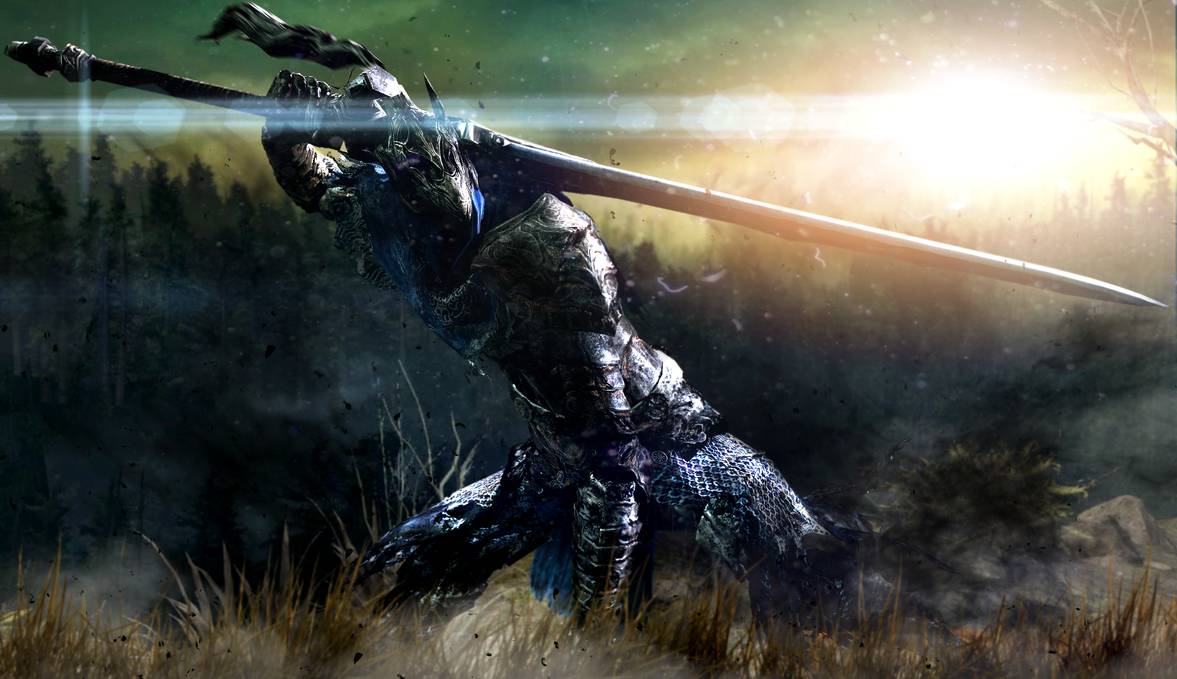
Calling Damage
When you strike with a weapon, you should call out the damage inflicted by that weapon.
The damage done by a weapon must be followed by some modifier; normally this is the word “damage”.
For example, if you are wielding a Two-Handed weapon and you have no special combat bonuses, you would call “Three Damage” when you strike an opponent with your weapon.
More Info
Calling Damage continued…
Even if your attack does not make contact, you may still want to call damage with every swing.
You never know if your opponent is going to make an error and your attack may get through unexpectedly.
If your attack lands and you do not call damage properly, your opponent does not have to take the damage.
Calling damage is out-of-game.
If your character is under the effect of some force that causes the character to be silent, you must still call damage with each blow.
When swinging special weapon attacks, such as the Slay or Disarm or Disarm skill, you should give your oppenent a moment to respond to the attack by either taking the effect or calling a defense.
It is good practice to acknowledge the attack by roleplaying the damage, or at a minimum looking at your opponent and saying “Got it,” or some other similar phrase.
This is not required but it will help to enhance everyones roleplaying experience and alleviate confusion.
If you are able to use multiple specialty attacks you may chain them together, attacking your opponent quickly. However, if your opponent ever calls more defenses, takes the effect, or any combination of these than you have Energy Points, then you will receive a rules violation.
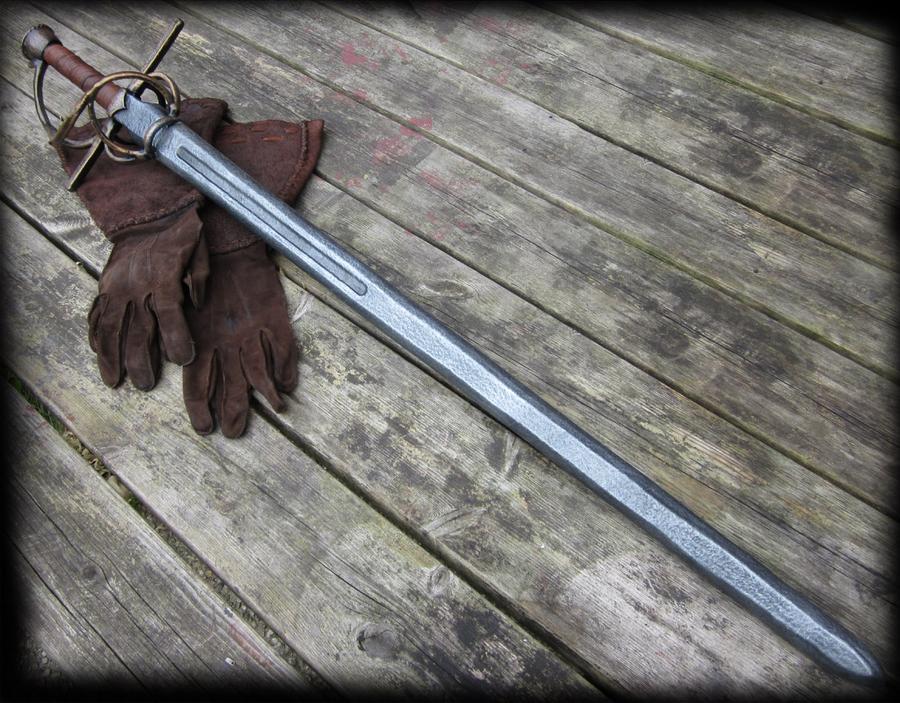
Additions To Normal Damage
You should add any damage bonuses you have to the Base Weapon Damage of the weapon you are wielding.
For example, if you are striking with a regular long sword you would call “Two Damage” with each blow; if you had two purchases of Weapon Proficiency skill giving you a +2 Damage Bonus with the long sword then you would call “Four Damage” with each blow.
More Info
Additions To Normal Damage continued…
If your character has the Florentine or Master Florentine skill, then you must call damage with each weapon for each strike.
You cannot add up the damage of both weapons in a single blow. Call the damagefor each of your swings clearly; these skills do not allow you to swing weapons twice as fast.
You should only call the damage that your character normally does.
If you are aware that a particular attack does extra damage to a type of monster, let the NPC do any special calculations.
For instance, Arturis the Warrior carries the legendary Lightning Blade. He knows that the Gelatin Golem he is fighting takes double damage from electrical attacks; still, he only calls “Two Lightning” when attacking and lets the Gelatin Golem’s player double the damage.

Taking Damage
You are responsible for keeping track of the damage that has been done to your character.
As you are damaged, you must keep a mental tally of how many Armor Points and Body Points you have, and subtract damage from this total as you are struck.
Under normal circumstances, you first subtract the damage from your Armor Points.
More Info
Taking Damage continued…
It is sometimes necessary to make a judgment call when you are trying to decide whether legal valid contact was made in combat. If you feel a solid blow, then you should take the damage. If you do not feel a solid blow from their weapon, then you do not have to take the damage.
If someone is consistently hitting you too softly, let them know. If someone insists they hit you, but you did not feel it due to thick clothing or heavy armor, take the damage honorably, and request that they strike with a little more force.
If you deliberately block or deflect a weapon with your own weapon, then it does not do damage, nor do weapons that strike your shield.
However, normal objects do not protect you against a weapon attack. If you happen to have a sheathed sword and someone hits you on that sheath, the blow is not parried; if you feel the blow you should take the damage. It is illegal to deliberately block an attack with a body part that is not a legal target.
If you think a player is not taking their damage fairly, then you should report them to a Marshal.
Be sure to ask the player about how much damage they thought they took; remember that there are monsters that are immune to the attacks of some weapons. Players who are repeatedly cautioned for not taking damage will be disciplined.
If no marshal is present, the player who is taking the damage, not the one inflicting it, has the final say on how much damage has been taken. If present, the marshal has final say on whether an attack is successful or not.
Illegal Combat Maneuvers
The following combat maneuvers are illegal in the PORTAL rules system:
♦ Striking the head or groin. If struck in these areas, characters do not take damage.
♦ Trapping a weapon with any body part.
♦ Trapping or pinning a weapon with another weapon or against any object at any time. This includes standing on a weapon or roleplaying standing on a weapon.
Illegal Combat Maneuvers Continued…
♦ Charging, or running at an opponent so fast as to force them to retreat for fear of injury.
It is acceptable to run up to an opponent so long as you stop in front of them and do not cause them to retreat because they are afraid that you may injure them out-of-game.
♦ Crouching down behind a shield so that you cannot be struck anywhere but in the head; this is called “turtling.”
Standing in a corner with your shield protecting you is not turtling; as long as you present a legal target for an opponent while your shield is in front of you, you are not turtling.
♦ Fighting in such a way that an illegal combat target becomes highly vulnerable to being struck.
Legal Contact In Combat
In combat, the only physical contact allowed between players is using a PORTAL-authorized weapon or spell packet.
You may not touch an opponent in combat with your hands, not even to cast a spell or administer a poison.
You may not grab an opponent’s weapon with your hand. A shield is not a weapon; you can use it to parry blows, but you cannot use it to pin a weapon or strike another player.
The following areas of the body may not be struck by a weapon at all: the head, the neck, and the groin.
This is a safety issue; if you should accidentally strike a player in one of those areas, then they take no damage. Excessive illegal strikes may require additional Weapons Certification Training.
Wrists and hands are “semi- legal” targets; it is not a weapons violation to hit those areas, but the target takes no damage as a result.
Though the chest is a legal strike area, please exercise extra caution when striking this and any other more tender areas of the body.
Apart from the areas mentioned above, all other parts of the body, including the soles of the feet, are legal parts of the body for weapon attacks.
Some attacks such as Slays are only effective on a specific part of the body.
These locations are given in the description of the skill.
I want To Know MOre
Detailed Combat Information…
Special Rules for Weapons & Shields
Bastard swords may be used with one or two hands; the damage varies according to the number of hands on the weapon.
All two-handed weapons, including staves and polearms, must always be used in two hands to score damage in combat.
If you wield the weapon with one hand, you cannot do damage with it but you can still block and parry.
Spears cannot be thrown.
The only weapons you are allowed to throw are those entirely made out of foam.
Shields
Shields do not add to the Armor Point value awarded a character. They are simply used to block attacks. Unlike armor, shields never “wear out”. A shield can sustain any number of blows struck by any type of weapon.
Spells that strike a shield are not blocked and still affect the character normally. However, shields of quality will stop elemental damaging attacks such as spells from the Ice School or Enchantments School.
Claws
Some characters with a skill or racial ability may use a claw to attack with instead of In Game weapons.
A claw is represented Out Of Game by a foam weapon wrapped entirely in white duct tape.
If your weapon strikes a claw, the character takes damage because the claw is part of the character’s body.
However, some character’s claws are so tough they do not take any damage if you hit their claws; these are called talons. The NPC should indicate they have not taken damage when their claws are struck.
A claw cannot be affected by a Fumble spell or removed with the Disarm skill. In addition, most martial skills such as Proficiencies, Slay, Critical Attack, Assassinate, etc. cannot be used with a claw.
You can never “touch cast” with a claw, no matter who you are.
Some creatures have spell like effects that sound or act like spells. This is acceptable and is clearly delineated on the character’s card. Also, certain characters with claws may be able to use faith skills and abilities through their claws. This also will be clearly delineated on that character’s card.
When You Strike An Illegal Blow
If you swing a blow and a player says, “head strike,” always take their word for it.
Even if you think the blow was an accident, treat it as a serious indication that you should alter your style of combat.
The most common reason for accidental head strikes is that you are aiming for a player’s shoulder and strike their head instead.
Do not aim for their shoulder anymore, aim for their torso instead; also remember that the feet and ankles are always legal targets and can be more effective points to aim at in combat than the shoulder.
When You Are Struck Illegally
If you are struck on an illegal part of your body, let your opponent know by saying, “head strike,” or whatever is appropriate.
If you are struck a second time, call a Hold and explain the matter to the offending player and to a Marshal. You should do this even if you think the second blow was a coincidence. You do not know if the player has a problem systematically striking other people in the head; the Marshal will know if the player has been warned before.
If you are struck illegally and are hurt Out Of Game, remember that it is your responsibility to call a Hold, not your attacker.
Your attacker cannot tell whether you are actually hurt or whether you are roleplaying the damage done to your character. Do not hesitate to call a Hold for your own personal safety; if you have been hit in the head and you think you are all right, call a Hold anyway; sometimes it takes a moment to feel the effects of a nasty blow.
Injuries & Facial Contact
Injuries
Important: If a player falls down before you and seems injured, ask.
It is their responsibility to call a Hold, not yours, but give them a chance to do so. However, if the player fails to respond or you see blood, call a Hold. If you hear them even whisper the word Hold at this point, repeat it with a yell so that the combat will stop. If a player falls down clutching at their head, then odds are they are not roleplaying; ask, “Out Of Game, are you all right?”
Facial Contact
The head and face are never appropriate for any In Game activity, whether it be an attack by a weapon, a target for a spell packet, or the application of an item such as a poison.
If you wish to represent facial contact in some way, hover your hand near the player’s shoulder and say “facial contact” Out Of Game.
Severing Blows & Disabling A Character
Sometimes a character – for good or ill – may want to disable a character or even remove a limb.
To remove a limb, a character needs an edged weapon; blunt weapons can never remove limbs. The character should place their weapon on the limb to be removed in the general area they want the limb removed.
The player should count to three, “Severing blow one, severing blow two, severing blow three, <damage>.” Conversely, the character can try and tear a limb off in the same way, but a minimum of a +6 Strength Bonus is required to remove the limb.
If the limb removed is either an arm or leg, the target character is immediately Bleeding to Death. If the head is removed in this manner, the target character is immediately brought to the Brink of Death.
If the character only wants to disable another character without tearing off limbs, they can deliver a disabling blow.
The character needs three of the following five skills to do so: First Aid, Autopsy, Battle Surgery, Dissection, or Evisceration. The character can disable limbs, hands, fingers, eyes, ears, or the ability to speak. The character should count 3 seconds saying, “Disabling blow one, disabling blow two, disabling blow three.”
The target character is immediately brought to 1 Body Point. Heal Limb spell or effect will fix any of these effects.
Restraining or Carrying Another Character
Sometimes during game play one character may wish to restrain another character for some reason.
There is no physical contact allowed between two players during combat, therefore in order to simulate the contact, the restraining character should touch the other character on the shoulder with a spell packet and say, “I grab you with plus <Strength Bonus>, <Location>”.
For example, if Feiht wishes to restrain Dunadass, he would touch Dunadass on the shoulder with a spell packet, and using his Giant Strength spell, say, “I grab you with plus three strength on your arms.”
The target of the grab has three choices. First, they can do nothing and be grabbed. Second, they could call a defense that stops physical attacks, or lastly, can use their strength to resist. In order not to be grabbed, the target must equal the strength used to grab them; in this case, the tie goes to the grabbed. Once grabbed, the character must exceed the strength used to hold them; in this case the tie goes to the grabber.
All Strength Bonuses must be called when grabbed or when being resisted.
There is no back and forth escalation of strength contests. If the Strength Bonus comes from a temporary source, such as a spell, then the initial attempt counts as one action. In the above example, if Dunadass was grabbed by Feiht, Feiht would be able to hold Dunadass for 15 seconds with a +3 Strength Bonus from his Giant Strength spell.
If for any reason, the target character resists the grab contest and wins, the grabber will have to try again and cannot simply restate the grab. Finally, no character can grab another character while either is engaged in combat.
Killing Blows
To force a character to the Brink of Death when they are Unconscious, Bleeding to Death, paralyzed, asleep, or otherwise totally unresisting, a player must touch the character’s torso with a weapon and say, “One Killing Blow, two Killing Blow, three Killing Blow,” followed by the damage done by the attack.
It is also acceptable to say, “Killing Blow one, Killing Blow two, Killing Blow three,” followed by the damage done by the attack.
It must take at least three seconds to say this phrase and requires the character to concentrate, therefore they may take no other actions while delivering the Killing Blow. This represents the time it takes for the player to set up the ideal shot that will kill the character.
For example, if you are giving a Killing Blow to a character, and you have a long sword and no Damage Bonus, you would say, “One Killing Blow, two-Killing Blow, three Killing Blow, two damage.”
A Killing Blow can be administered with a thrown weapon, a bow, or a crossbow.
You must count “One Killing Blow, two Killing Blow, three Killing Blow,” cast your weapon, hit the target character in the torso, and state the amount of damage done by the weapon. If you should hit the target with the weapon but not in the torso, they still take the damage you called and if they are asleep – in- or out-of-game – the player or character should be woken up.
A Killing Blow can also be given with a magic spell that does damage.
The spell caster must say the spell verbal, count “One Killing Blow, two Killing Blow, three Killing Blow,” then either hit the character with a spell packet or touch the character’s torso with a spell packet, and then state the damage done by the spell. For example, “With pure magic I cast a shock… one Killing Blow, two Killing Blow, three Killing Blow… four magic lightning.”
If the Killing Blow is delivered with a weapon, and the weapon has a special property, you must include the property in the phrase.
For example, if you are giving a Killing Blow to a werewolf and you have a silver long sword, you would say, “One Killing Blow, two Killing Blow, three Killing Blow, two silver”. Maybe this will not make any difference, but you never know…
You can give a Killing Blow with your bare hands (packet touch) but you must have a Strength Bonus of at least +3 or the Killing Blow Magic skill.
If the player giving the Killing Blow is interrupted while saying the phrase, the fallen character is unaffected.
If you are giving a Killing Blow to a player who is sleeping In Game, if they wake up and dodge while you are saying the phrase, then you have not killed their character. If they sleep through the phrase, then their character is dead; wake the player and tell them the bad news.
The reason you must include the damage done when you give a Killing Blow is that there are some monsters that are resistant to damage, or can only be affected by special weapons. For example, a monster with thick, horny skin may be unaffected by blows that do 2 points of damage or less; such a creature would not be harmed by a Killing Blow delivered with an ordinary dagger.
Special Attacks
There are a variety of special attacks that you may be able to strike in combat.
An attack may be special because of an ability your character has, because of a special weapon you have, because of a magic spell that is aiding your attack, or because you are playing a monster with a special power.
Most special attacks are announced by giving the damage caused by the blow, followed by the special property of the attack. However, there are some attacks that do not do damage in a conventional way and so no damage is announced.
This holds true for spells thrown at another character.
A character can parry a spell for another character using any martial parry skill. However, the parrying character takes the effects of the spell just as if they where hit by it. The parrying character may call a defense that stops spells if they have one to prevent the spell from affecting them.
The only exception to this rule is are the Perfect Aim and True Aim skills.
A character cannot parry these attacks when they are directed against another character.
The damage type follows the amount of damage dealt when the player swings the attack, for example, “Two Damage”, “Six Magic”, or “Four Paralyze”. These effects are cumulative as in these examples: “Four Body Poison”, “Twelve Magic Fire Crit”, or “Ten Gold Lightning Body Poison”. The order of the modifiers does not matter; “Waylay Magic Three” and “Waylay Three Magic” are the same. Also, never use “Damage” in conjunction with any other special attack. For example, you would say “Five Fire”, “Four Stun”, “Slay”, or “Slay Magic” not “Five Fire Damage”, “Four Damage Stun”, “Slay Damage”, or “Slay Magic Damage” respectively.
Other Attacks
There are also monster attacks that do not involve direct attacks with weapons (or claws).
Here are some of them: Acid, Fire, Cold, etc.: Some creatures have the ability to breathe or shoot substances that do damage.
Normally this is represented by the monster NPC tossing a spell packet.
The monster NPC would announce the amount of damage and type of substance when they toss the packet. For example, a dragon might call, “Fifty Eldritch Fire,” if the packet hit.
Death & Dying
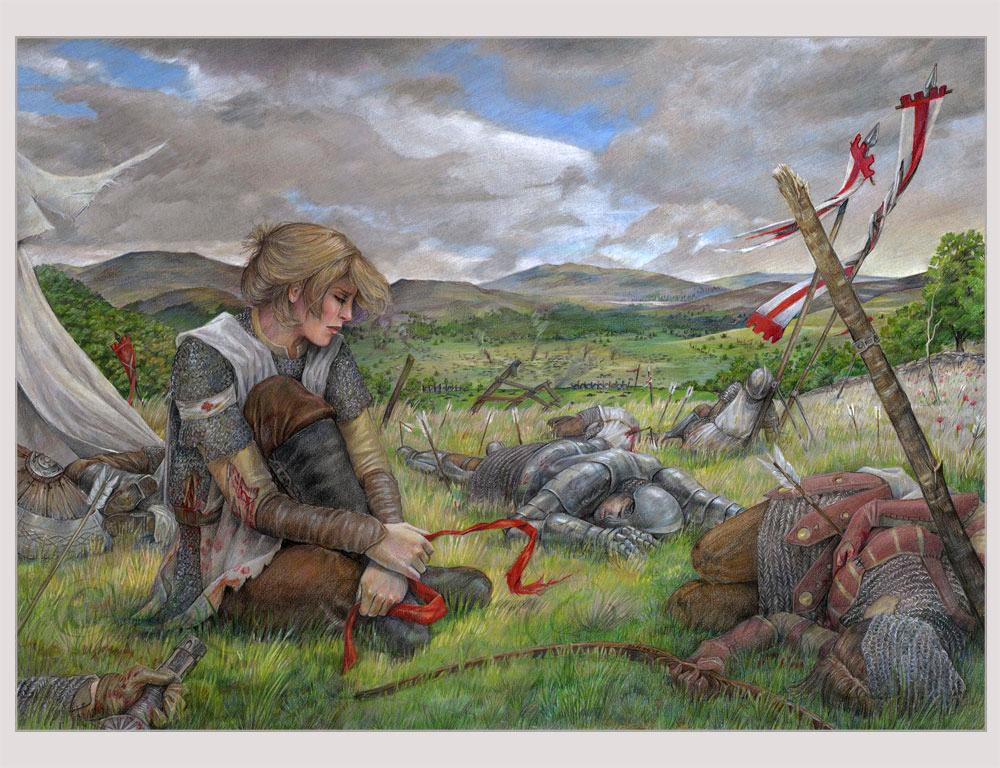
Types Of Injury
There are different levels of injury that your character can sustain.
The simplest injury, Body Point damage, is most often caused by weapons and spells and can be directly cured with skills and spells that restore Body Points such as:
Heal Person, Battle Surgery, Healing Potion, Heal Wounds, Soothe Your Wounds, Heal spell song, etc.
No matter how much damage you take, you will never go below -1 Body Points!
More Info
Types of Injury
Whenever you lose or gain Body Points for any reason, you are required to update your Body Point total in your mental (or written) tally.
You may note it in the apporpriate area on your character card if you desire a written record.
When your character is healed, the player must adjust their mental Body Point total to reflect the change in your character.
If these changes are occuring rapidly during an encounter, you must wait until combat is over to adjust the totals on your card.
Your character can be injured in other ways than Body Point damage. For example, a limb can be incapacitated by a Stunning Blow, and only a Heal Limb effect will restore it. Special injuries are described under the skill and spell rules that can cause or cure that type of injury.

Death & Recovery
When your character has lost all their Body Points, you should fall to the ground, lie still, and start your Death Count.
The table below describes the various stages of your Death Count and how long it takes to progress to the next stage.
Do not talk to other players out-of-game unless it is necessary.
If the ground is wet, muddy, or rocky, you can kneel or crouch; just make sure it is visibly clear to your fellow players that your character is down.
So, a character that is reduced to -1 Body Points will generally have a total of 6 minutes to receive healing before they are dead and have the option to attempt resurrection.
More Info
Death & Recovery
Do not talk to other players out-of-game unless it is necessary.
If you are counting down the amount of time you have left, do so silently unless someone uses First Aid or casts a Detect Life or Assess Your Ailment spell on your character.
No matter how much damage you take, you will never go below -1 Body Points. If your character is at -1 Body Points and you are hit for 10 points of damage, you are still at – 1 Body Points.
Characters do not die immediately when they go below 0 Body Points. In summary: a character can be Unconscious at 0 Body Points for 5 minutes, then they will wake up; a character can lay dying at -1 Body Point for 1 minute during which they can be healed; a character is at the Brink of Death for 5 minutes and can still be restored by a Heal Life spell; after that a character is dead and must be resurrected by a Return Spirit or at the Healer’s Guild.
So, a character that is reduced to -1 Body Points will generally have a total of 6 minutes to receive healing before they are dead and have the option to attempt resurrection.
While a character can remove the extremities from a body, the torso is not destroyed with normal damage. After a character is past their Death Count and the player’s spirit has not yet left, then things like acid and fire and other destructive effects can destroy a body.
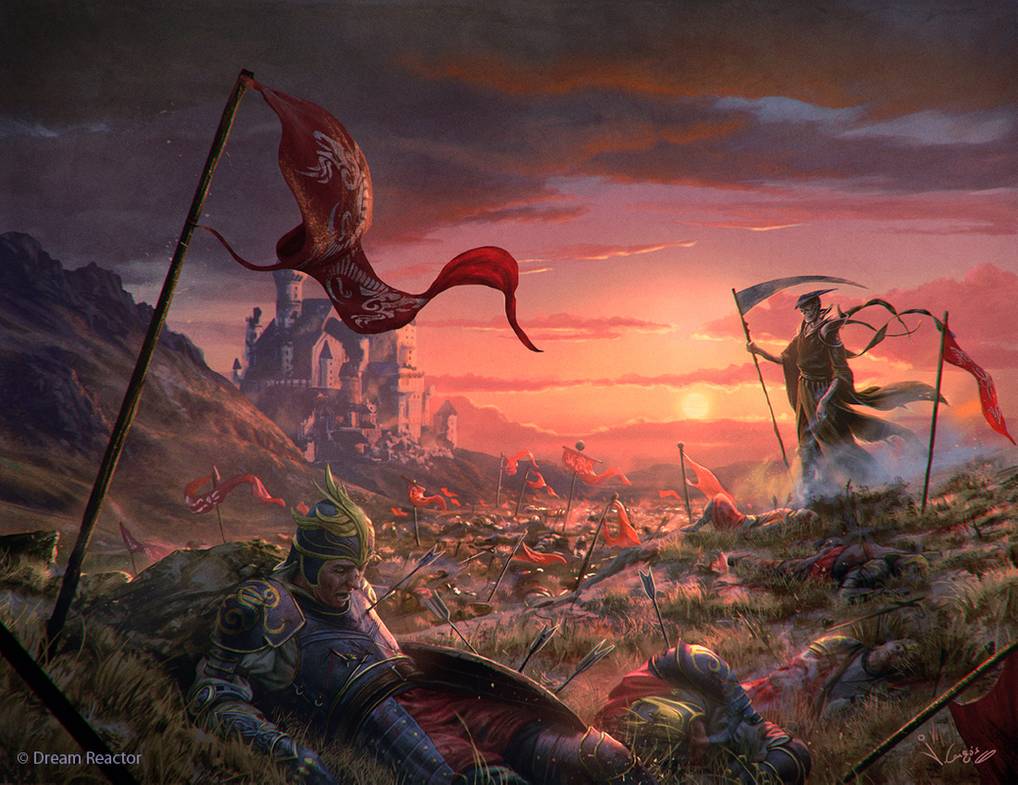
Unconsciousness
If your character takes enough damage to go to 0 Body Points, your character is Unconscious. If you are undisturbed, you will revive in 5 minutes and be at 1 Body Point.
A character who has been Waylaid is also Unconscious; if left undisturbed, they will revive in 5 minutes.
If they are healed for at least 1 Body Point or First Aid is applied and completed, they will immediately become conscious before the 5 minutes have elapsed.

The Body & The Spirit
Every sentient character in the game has a body and a spirit.
The body is the physical, corporeal, tangible manifestation of the character in the game world.
The spirit is the essence of your character, all their memories and personality, their experiences and skills are part of the spirit.
First Death
The one exception to these rules is your character’s first death. Regardless of what level your character first dies at, be it Level 1 or 41, you will always resurrect. The player does not pull a marble on their first death.
I’m losing all my marbles
The Death System
When you attempt to resurrect at the Healers’ Guild, you must check to see if the resurrection was successful.
You will blindly choose one marble from a bag of twenty marbles, each of which is black or white. Here is what the colors represent and how the quantities are calculated:
Pulling a white marble means a successful resurrection, your spirit will now reconnect with its body and you can now go on adventuring…or sitting…or breathing!
Pulling a black marble means your resurrection has failed and you are still dead. However, this death may not be your last!
If you had at least one white marble left in your resurrection bag when you failed to resurrect and you wish to come back from a failed resurrection, you can use Service Points to “save your character from final death” at a rate of 10 Service Points per black marble in your bag.
Who says good deeds aren’t rewarded!?
More About the Death System
There are some means in the game, magical or otherwise, that automatically resurrects your character regardless of your chances.
If a character is unresurrectable and they die, their body does not dissipate. If their body is destroyed they cannot attempt to resurrect and their body is lost forever. However, this death is recorded on the character card.
If the “resurrection bag” is not available, and the player whose character is being restored agrees, any convenient means may be substituted for the resurrection bag; for example, a 20-sided die could be used.
No matter which color marble you pick, your death must be recorded on your character card.
How Many of Each Color Marble Do I Have?
Each character starts with twenty white marbles in their resurrection bag.
Every time your character gains a level, a white marble is replaced with a black one. Every time your character dies, a white marble is replaced with a black one.
Uses of the Heal Life spell do not constitute a “death” in this system.
What Do I Do When I Die?
You have gone through your Death Count and arrived at Death… Don’t Panic!
If your character has Died, you may continue roleplaying the dead body for as long as you wish. Your spirit can remain within your body indefinitely but you must continue to roleplay the body the continuously.
You may wish to keep roleplaying your body for several reasons: you hope to receive a Return Spirit spell; you want your body to serve as a warning to others; you are hoping to be used to create a greater undead being, and many more…
When you decide that you have waited long enough, you can become a “spirit” and go in search of what comes next…
What Comes Next
As a spirit the only In Game activity you can perform is to go to the Resurrection area to attempt resurrection.
In all other regards, as a spirit, you are out of game and cannot interact with the In Game world in any way whatsoever.
To become a spirit you must state the word “Dissipate” and then immediately put on your white headband to indicate that you are out of game and that your body has dissipated leaving only your In Game and In Play items behind.
Resurrection
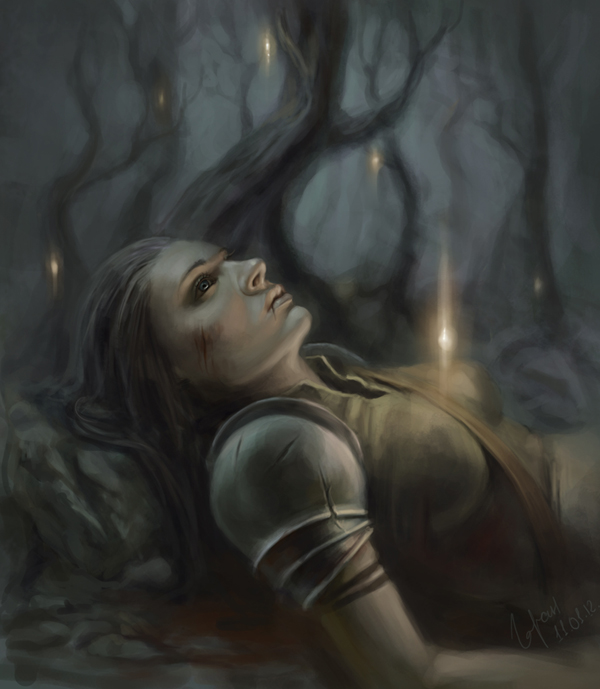
I Have Died & Dissipated, Now What?!
All In Game items are to be left behind or dealt with in the following manner:
You may leave your personal weapons and armor where you died or take them to the Armory or Merchants Guild, but you must leave the tag at the spot where they fell when you died.
Personal costuming and items can be left at a players discretion.
All PORTAL property (weapons and items) must be left at the location where your character died. Don’t forget, magic weapons are PORTAL property!
If your character has died in an out-of-the-way place and you doubt that your items will be found before the end of the event, or if they in danger of being damaged be prolonged exposure, leave the required items anyway and inform a marshal where you died, before you resurrect.
On To Resurrection…!

Resurrection
If your spirit requires or chooses to seek assistance to Resurrect (as most do), then once you have disposed of all of your In Game possessions, go to the Resurrection area; in most cases for Valorians this is a Healer’s Guild.
When your spirit arrives at the area lie down or sit and wait for a healer; they will know what to do next Out of Game as well as In Game and will guide you on your journey to a new living body, or to what lies beyond.
If your spirit is able to attempt Resurrection without assistance and you plan to use a Resurrection ability alone, you must go to a Logistics Marshal to perform the Out of Game tasks associated with Resurrection before going to the In Game resurrection area to role play the result of your Resurrection attempt.
Interaction with the Dead
When a living character comes across a dead character, neither character can communicate in any way to each other.
Neither party can speak or gesture or pantomime any kind of information.
The Roleplay of Resurrection
Resurrections take five minutes to complete.
Be as still as you can, in a position that you think that you can comfortably hold for 5 minutes and relax.
Enjoy the break, you were probably just in a fight!
How Can I Assist Resurrecting Someone?
First, your character must learn the process, both In and Out of Game, and have the ability noted on your Character Card.
In order to assist resurrecting another character, your character must have learned Rank 3 of the Healing School, or a skill or ability that allows them to life.
For example, the Life skill, Legend Life spell song, or even the Death Touch skill as it can be used to life in certain circumstances.
Find out more about this ability In Game!
